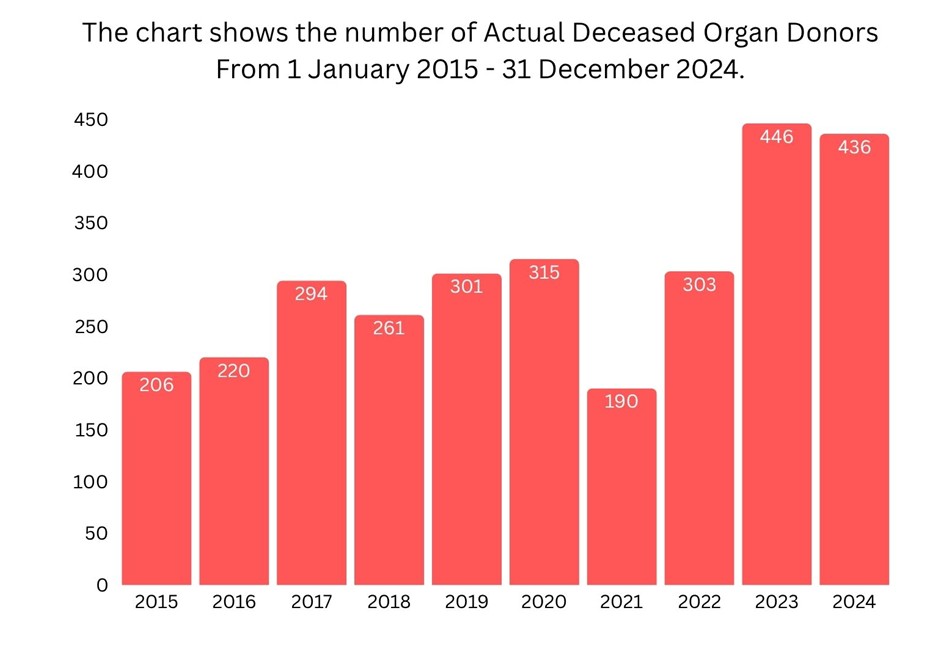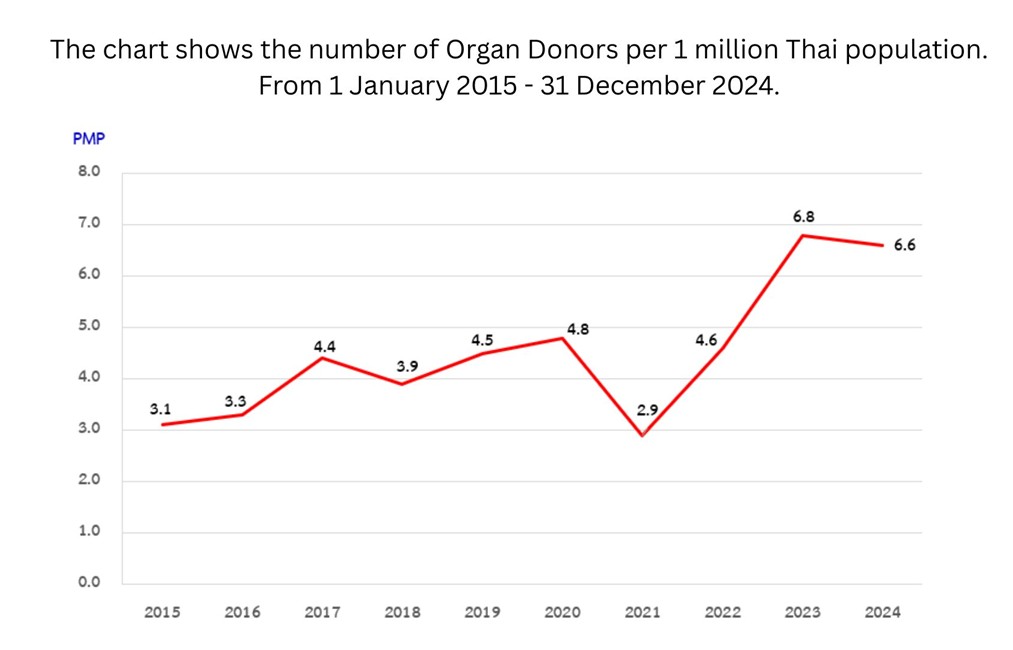Key factors driving increased organ donations in Thailand
Sakoonkaew Kaewprathom1, Siriluk Sakunlaijitjaroen1, Sukanya Khong-in 1, Plearnpit Jarusarn 1, Nawapat Sarithboonmaphol 1, Jidapha Wisaya 1, Waraporn Suebjaeng 1, Salinee Cheewasupakorn1, Sukawan Sroyson 1, Yuwadee Attajarusit1, Supanit Nivatvongs 1, Visist Dhitavat 1.
1Thai Red Cross Organ Donation Center, Thai Red Cross Society, Bangkok, Thailand
Introduction: Thailand has seen a rise in organ donations due to increased public awareness, supportive government policies, improved healthcare infrastructure, changing cultural attitudes, etc. These efforts have contributed to saving more lives and supporting patients awaiting transplants.
Material and Method: A retrospective descriptive study analyzing data from January 1, 2014, to December 31, 2024.
Results:


A study compiling data on the key factors contributing to significant increase in the number of brain-dead organ donors over the past decade identified seven main factors as follows:
1.Implementation of Organ Donation and Transplantation Policy
Since 2016, the Ministry of Public Health (MOPH) has strengthened national policies by establishing a Transplantation Service Plan and Excellence Centers. The 2025 goal is to increase deceased donors (DD) relative to hospital deaths by 10% compared to the previous baseline.
2.Development of Regional Retrieval Team (RRT)
In partnership with MOPH and the Kidney Foundation, Thai Red Cross Organ Donation Center (ODC) has trained 17 surgeons and 34 OR nurses from 13 hospitals. Five regional hospitals now perform kidney retrieval surgeries independently. Additional hospitals are developing into RRTs or transplant centers through local mentorship.
3.Deceased Donor Dashboard System
Hospitals under MOPH use a Donor Dashboard to report monthly on brain-dead donor identification, donation requests, success rates, and organ retrievals. This system provides oversight, drives competition, and prompts underperforming hospitals to revise plans. The 2025 goal is to increase DD and RRT numbers by at least 10%.
4.Training Programs
ODC, related agencies, MOPH, university hospitals, and Boromarajonani College of Nursing provide a 4-day annual course, a 4-month intensive program, 1–2-week RRT training, and Soft Cadaver workshops to build capacity in transplant coordination.
5.Public Awareness Campaigns
Collaborative campaigns through TV, websites, Facebook, YouTube, and TikTok, etc. led by TRC and partners, have helped increase public engagement and organ donation registration.
6.Government and TRC Funding
Funding support from TRC, MOPH, the National Health Security Office, the Social Security Office, and the Comptroller General’s Department has improved compensation and operations for ODC donor, hospitals and transplant centers.
7.Regulations and Protocols
Guidelines issued by the Medical Council and TRC have strengthened the credibility and standardization of brain-dead donation processes and transplantation.
Although Thailand lacks organ donation and transplantation legislation a draft law is under development.
Conclusion: Thailand uses an opt-in system and has improved deceased donor numbers by focusing on infrastructure. However, organs used per donor haven’t increased. More progress is needed in early donor detection and improved donor management.
Reports from The Technical Committee, Thai Red Cross Organ Donation Centre.. www.organdonate.in.th.